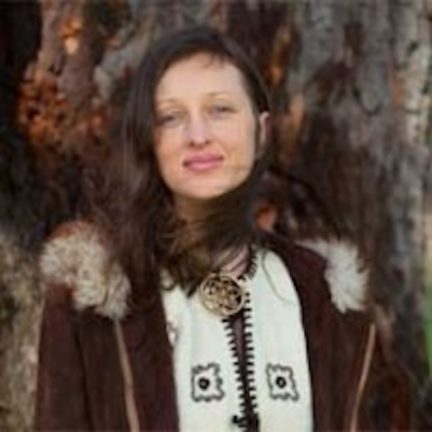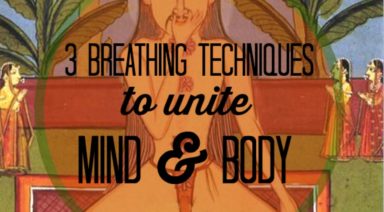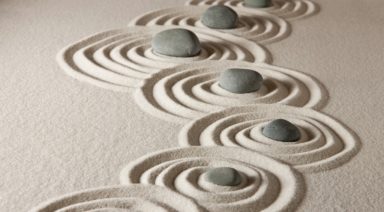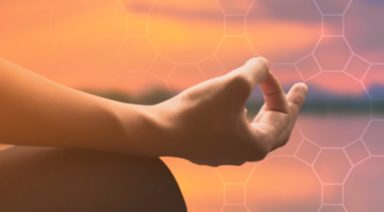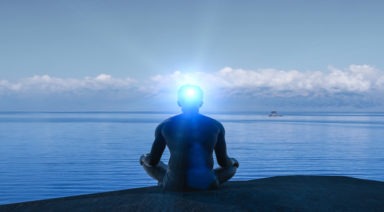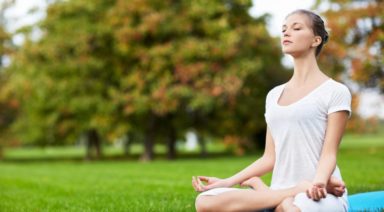Experiencing Consciousness Through Mindfulness

Have you ever had a moment where you felt a heightened sense of awareness in which you could tune into your environment and people around you; allowing you to perceive things you wouldn’t normally? Or have you ever experienced becoming aware in a dream in which you were then able to start making decisions within the dream world (lucid dreaming)? What about a moment of love and compassion where you could actually feel what another person or animal was going through almost as if you were them?
These kinds of experiences offer us a glimpse into a profound way of being and perceiving reality that we each carry within, and that we can learn to use to bring about a more conscious, connected, and spiritual way of living that is literally just waiting for us to shift into whenever we choose.
Coming into the present moment
You may have noticed that a heightened sense of awareness is always accompanied by our perception coming fully into the present moment. It can feel a bit like switching on a light in a darkened room or focusing the lens of a camera—all of a sudden it’s like the world around us comes into view and clarity.
By coming into the awareness of the moment in whatever we’re doing, we perceive from our consciousness rather than the subconscious; which manifests as dreams and daydreams in which we lose perception of what’s happening around us and are drawn into the self-created images of our own thoughts and emotions. And because consciousness is the eternal, spiritual part of us, not only can we see physical stuff more clearly, but we can also perceive things that are non-physical too.
“…end the sleep which weighs heavily upon you. Depart from the forgetfulness which fills you with darkness… O soul, persistent one, be sober and shake off your drunkenness… Light the light within you.”
The Teachings of Silvanus from the ancient Gnostic Nag Hammadi Library, translated by Malcolm L. Peel and Jan Zandee
Taking control of the wheel
Although consciousness tends to get neglected—usually remaining submerged in a continuous stream of thoughts and daydreams, and forgotten amidst the concerns of everyday life—like a muscle, when we exercise it, it gets stronger and we can feel clearer, more “present,” and “truer” to who we are.
Coming into the present moment can feel like something we have to put down whatever we’re doing to experience, but being more conscious doesn’t mean we stop acting, thinking or feeling. Instead, like a driver taking control of the wheel, it means we are able to be more conscious of our thoughts, feelings, and behaviours, and therefore more discerning with those we choose to have.
Expanded Consciousness is the point we ultimately develop spiritually from, as it’s the eternal part of us—deeper than our intellect, knowledge of facts, or personal talents, it’s the part of us that journeys through eternity and that’s why in many spiritual traditions it is the focus of their disciplines and exercises.
“Intellectual knowledge exists in and of the brain. Because the brain is part of the body, which must one day expire, this collection of facts, however large and impressive, will expire as well. Insight, however, is a function of the spirit. Because your spirit follows you through cycle after cycle of life, death, and rebirth, you have the opportunity of cultivating insight in an ongoing fashion. Refined over time, insight becomes pure, constant, and unwavering. This is the beginning of immortality.”
Lao-Tzu in the Hua Hu Ching, translated by Brian Walker
Activating consciousness
Consciousness is something we can experience anywhere anytime. Here’s a little exercise that anyone can try, no matter what they are doing.
For example, if you’re reading as you are now, you can begin by just becoming aware of reading these words. Start then to become aware of your own breathing, and of your body sitting in the chair. Next, become aware of the various sounds you can hear around you. Look around and perceive the light and colours of the things you can see, any people, animals and interactions, the objects and sense of space. Just consciously perceive what’s around you without labeling. See if you can spend a few moments doing this.
Notice how thoughts start to appear. They could be about this article, or about what someone said. Just become aware of them. Observe the state you feel—perhaps a slight tension in your stomach, or a feeling of agitation. Notice how these feelings can cause you to move in a certain way, like jiggling your legs or clenching your muscles. Don’t become distracted by them, just perceive them.
Consciousness is that which is doing the perceiving—and can be directed both inwardly and outwardly. Notice that you can perceive without thinking—that you can perceive just by seeing.
Consciousness – beyond body and mind
Simply by trying this one exercise we can experience consciousness and observe how there is something within us that is beyond thoughts and feelings, and even beyond the mind. Going further, consciousness can even be experienced as being beyond the body in near-death and out-of-body experiences.
If you try this exercise a few more times, you will begin notice that there’s a permanent observer—one that is essentially always there, and always the same, whilst the different thoughts and feelings change from one moment to the next. If you recall a memory of when you were a child for example, you’ll feel that what was fundamentally having that experience then, is what is experiencing this moment now.
The potential to develop consciousness
Many different peoples throughout time discovered the inherent potential each of us has to develop our consciousness. They termed the outcome of this development enlightenment, awakening, self-realization, etc. Using their developed consciousness, they built sacred sites, created masterpieces of art and music, and explored the mysteries of life and the universe, all of which remain a timeless testament to human spiritual potential. We too have this potential, which is why spiritual truths remain timeless and just as relevant now as they were thousands of years ago.
Consciousness is what connects us all to the spiritual source, to each other, to all forms of life, to other planes of existence, and throughout time into eternity. Therefore by experiencing and developing it we can perceive, connect with, and partake in the greater spiritual reality and majesty of all that is—something truly wonderful to be alive for and to experience.
Meditation and Mindfulness; Methods for Lasting Peace

Mindfulness is an essential and useful pathway that leads to peacefulness. It isn’t rocket science, it doesn’t require a trendy workshop, and it doesn’t require that you live in an ashram.
“Each place is the right place. The place where I now am can be a sacred space.”
– Ravi Ravindra
What is Mindfulness?
The most basic definition of mindfulness might be the act of paying attention to the things that you are experiencing, and then choosing peacefulness in relation to every action, person, thought, feeling, and response.
Mindfulness in its purest form has the following characteristics:
- Being fully present to what’s happening in this moment
- Leaving the past in the past
- Letting fantasies of the future dissolve
- Refraining from self-judgment and judging others
- Keeping emotions in-check
- Responding instead of reacting
- Strengthening our connection to our core selves

